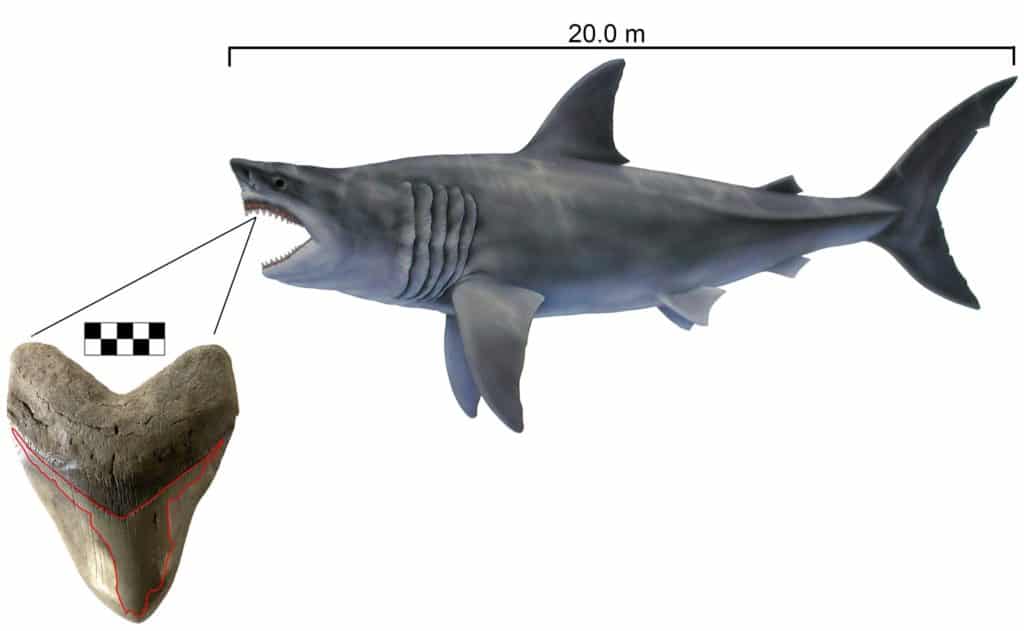Just how big was the prehistoric super-sized shark megalodon? Scientists have been debating the point for more than 100 years.
While the extinct Otodus megalodon is often regarded as the largest shark to ever live, no paleontologist had ever been able to give a good estimate of its size—until now. A paper by a paleontology curator at Calvert Marine Museum (CMM) estimates the megatooth shark at 65 feet long, using a novel new estimation method.
CMM Assistant Curator of Paleontology, Dr. Victor Perez and two other paleontologist/scholars conducted a study using an ultrarare set of teeth from one individual shark to map its overall body length.
Full sets of teeth, known as associated fossil dentitions, allowed the study’s authors to measure the width of the megalodon’s jaw. In many living sharks, there is a precise relationship between the width of the jaws and the length of the shark. So Dr. Perez and his team measured the associated fossil dentitions of 11 individual sharks from five species. Four were extinct apex predators, and one was the modern-day great white shark, Carcharodon carcharias. Based on careful tests and measurements of the largest set of teeth from Otodus megalodon, the authors estimated a maximum body length of 65 feet for the prehistoric shark.
Megalodon teeth have frequently been found near Calvert Cliffs on the Chesapeake Bay, and as Bay Bulletin reported as recently as 2018, paleontologists found fossilized dolphin tail bones that featured bite marks from a megalodon.
You can learn more about the prehistoric megalodon at Calvert Marine Museum, and have a chance to get up close with a life-sized model of the Carcharocles megalodon‘s giant, gaping jaws. To plan a visit, go to calvertmarinemuseum.com.
-Meg Walburn Viviano




